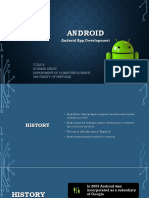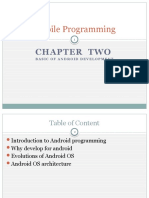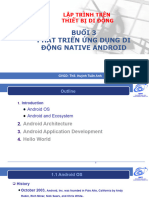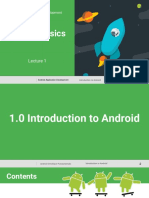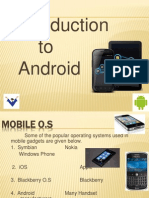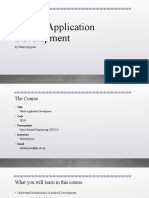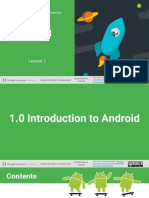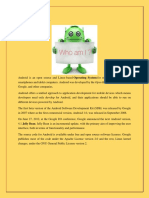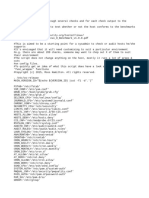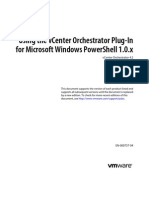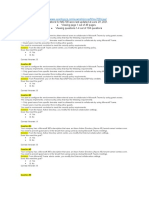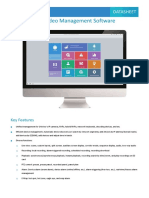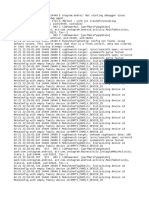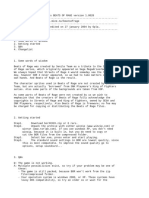0% found this document useful (0 votes)
5 views30 pagesPertemuan 01 - Introduction To Android
The document provides an introduction to Android, detailing its ecosystem, platform architecture, and app development challenges. It covers the Android operating system's features, user interaction methods, and the tools available for developers, including the Android SDK and Android Studio. Additionally, it outlines the history of Android versions and the essential components required for building Android applications.
Uploaded by
hafizadip1Copyright
© © All Rights Reserved
We take content rights seriously. If you suspect this is your content, claim it here.
Available Formats
Download as PDF, TXT or read online on Scribd
0% found this document useful (0 votes)
5 views30 pagesPertemuan 01 - Introduction To Android
The document provides an introduction to Android, detailing its ecosystem, platform architecture, and app development challenges. It covers the Android operating system's features, user interaction methods, and the tools available for developers, including the Android SDK and Android Studio. Additionally, it outlines the history of Android versions and the essential components required for building Android applications.
Uploaded by
hafizadip1Copyright
© © All Rights Reserved
We take content rights seriously. If you suspect this is your content, claim it here.
Available Formats
Download as PDF, TXT or read online on Scribd
/ 30




